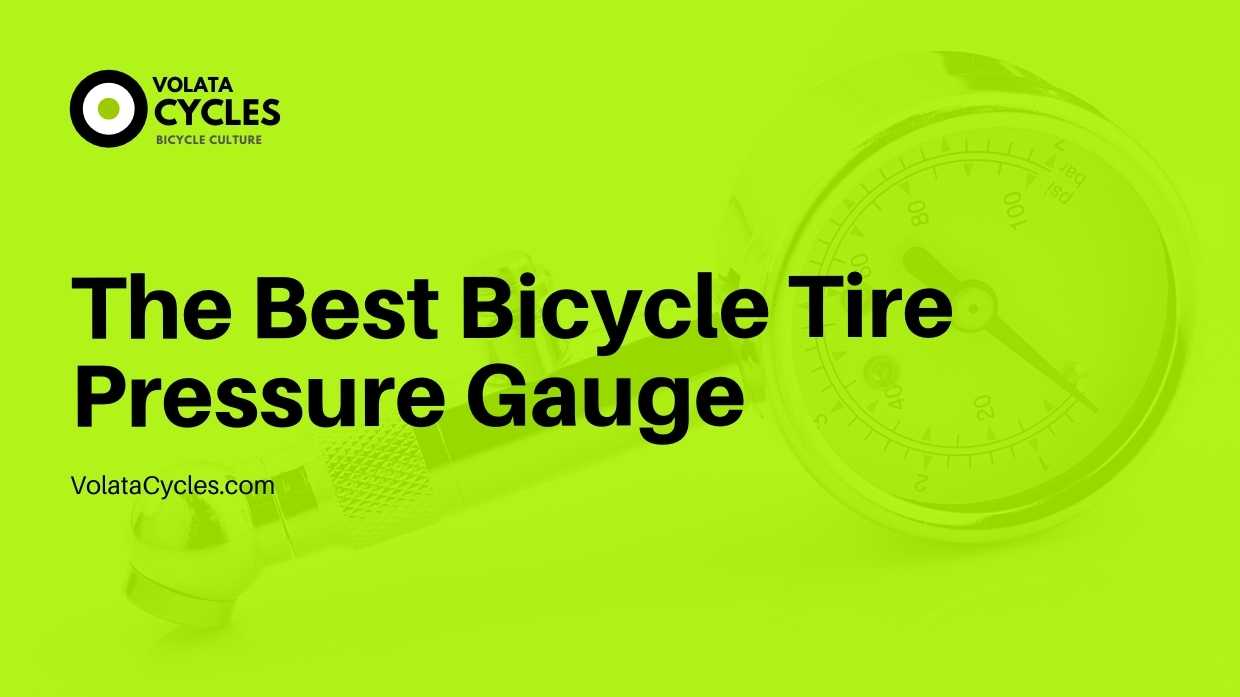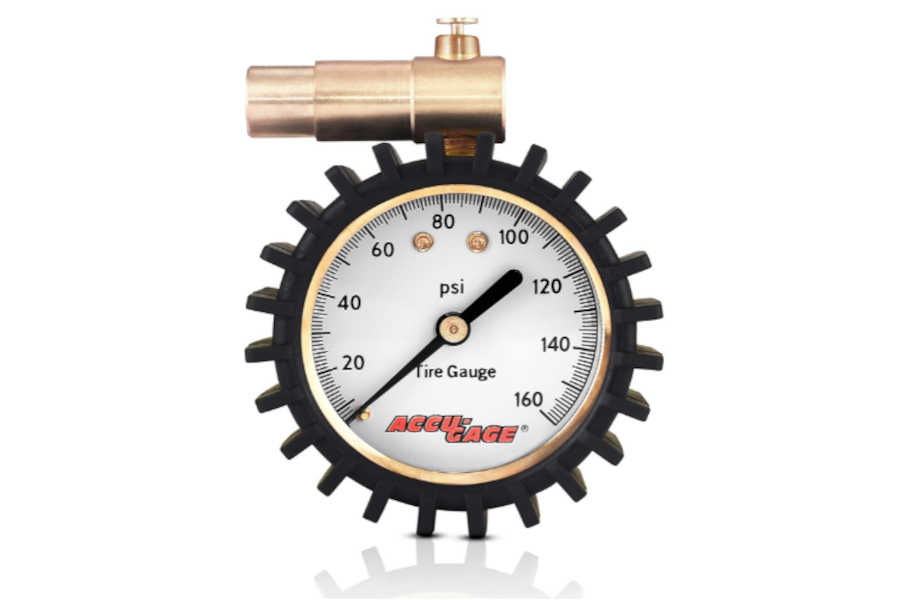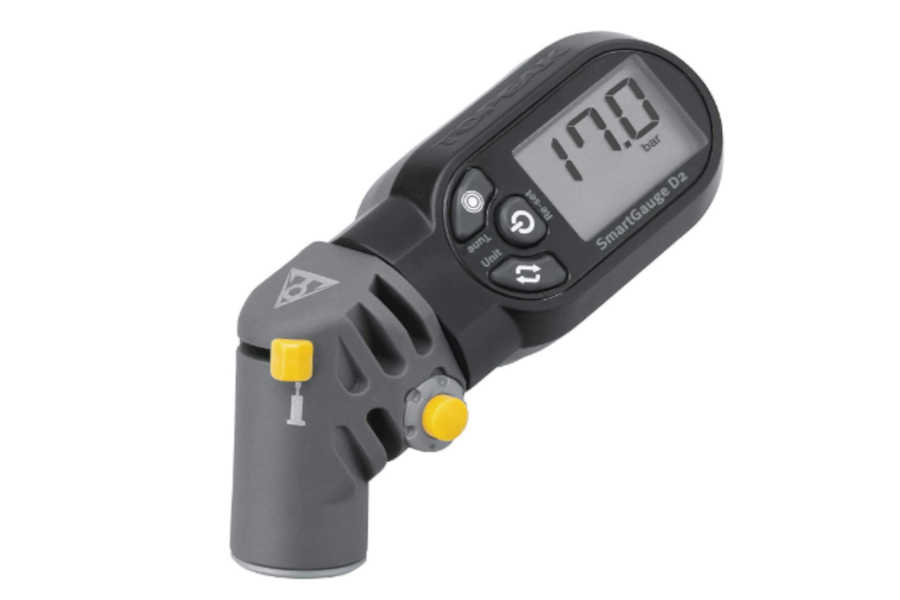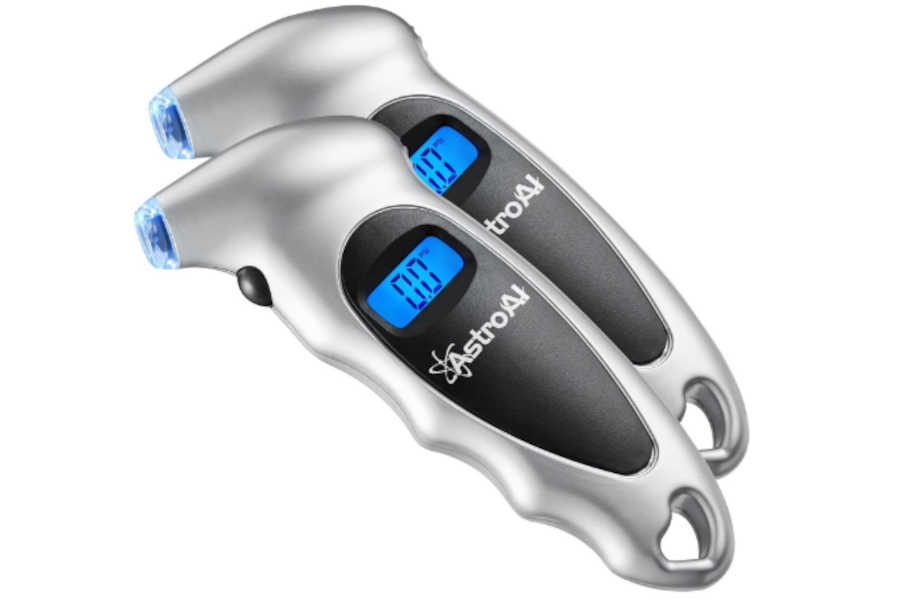The best bicycle tire pressure gauge can help you balance your bike tires during a ride and get rid of issues like pinch flats. If the tires are under-inflated, it can cause the bike to bounce up and down while riding, which not only makes it hard to control but also causes strain on your back/neck. If they are over-inflated, the bike’s rolling resistance will increase, causing the tires to wear out more quickly than usual.
Many bicyclists make the mistake of relying on inaccurate pressure gauges when pumping their tires. But the truth is that what you see isn’t always what you get.
That’s why it’s best to take a tiny pressure sensor along for the ride to avoid nasty surprises. With a small portable device that plugs straight into your phone or computer, you can be certain that your tires are always topped off. Below are bicycle tire pressure gauges that won’t let you down in a pinch.
1. Accu-Gage Presta Valve Bicycle Tire Pressure Gauge
Check the Latest Price on Amazon
The Accu-Gage Presta Valve Bicycle Tire Pressure Gauge lets you keep track of your tires’ PSI and other important information, so you can ride your bike for as long as you want. The gauge itself is slightly on the large side, but it’s an analog model, meaning there are plenty of readings to go around. This model offers a larger range of PSI — from one PSI to 160 PSI — than the other gauge models.
You’ll love this bicycle tire gauge for more reasons than one: it’s built to last, so you can use it whenever you want with no batteries needed, and it’s made from pure bronze, a metal that doesn’t suffer from changes in temperature, humidity, or altitude.
Once attached to a Presta valve, the gauge will hold air pressure. Push the button to release air and take an accurate pressure reading. Once you have chosen your tire’s ideal PSI, the gauge will turn off automatically after ten minutes of inactivity, ensuring that excess battery isn’t wasted on maintaining tire pressure.
The Accu-Gage has a few minor setbacks. It’s not the most attractive gauge with its grey and black design, and it only works with Presta valves.
However, it’s extremely accurate, durable, and dependable. Plus, it can never run out of batteries. The Wahl 79500-210 is often imitated by competitors but never duplicated.
2. Topeak SmartGauge D2
Check the Latest Price on Amazon.
The Topeak SmartGauge D2 is a versatile smart pump that can measure up to 275 PSI, 165 Bar, or 3,000 kg per cm. With a low-profile design and an LCD display with backlit icons for night riding, the SmartGauge D2 features an auto shut-off for safety and accuracy.
This includes an air release button to remove any air trapped in the valve after each use. This lets you add the perfect amount of air for your specific needs, so you can enjoy riding with just the right amount of pressure in your tires. The Topeak Smartgauge D2 head rotates at 90 degrees so you don’t have to worry about taking a difficult angle reading.
If you prefer not to damage plastic parts on your bike, this is the tool for you. Made from metal and rubber, it’s built to last through any wet conditions. It’s small enough to keep in your pocket when not in use but still big enough to handle the toughest of tasks.
3. AstroAI 2 Pack Digital Tire Pressure Gauge
Check the Latest Price on Amazon.
The AstroAI 2 Pack Digital Bicycle Tire Pressure Gauge is an easy-to-use air pressure gauge that lets you gauge the air pressure in your bicycle’s tires. With its no-leak technology, the gauge can adhere securely to Schrader valves on car tires and it offers a number of easy-to-use readout presets for popular tire PSI measurements: 0.1 increments for PSI, 1 bar, 10 KGF, and 100 KG/cm (kilograms per centimeter).
The device also has a digital display so you know exactly how many PSI you’ve reached. It also lets you check your tires’ pressure in the dark thanks to its backlit LCD display, and it has a wide grip that makes it easier for you to use even if you’re wearing gloves.
With only the press of a button, you can turn the hydrometer on and begin testing. The auto-off feature ensures that when you go to check for the reading, you will have power and won’t have to worry about depleting the batteries in the process.
If you’re looking for a digital tire pressure gauge, but aren’t concerned with size, check out this one by AstroAI. With an ergonomic design and backlight display, it’s perfect for filling up tires in low light or when working at night. The gauge is also much larger than Topeak, making it easier to read the pressure level on your bicycle.
Tire Pressure 101
The perfect tire pressure for bikes makes a world of difference. Proper tire pressure can improve your ride quality, reduce the risk of tire popping, and increase speed. Road bicycles require around 30 to 120 PSI (pounds per square inch) of pressure, depending on the type of bike you have.
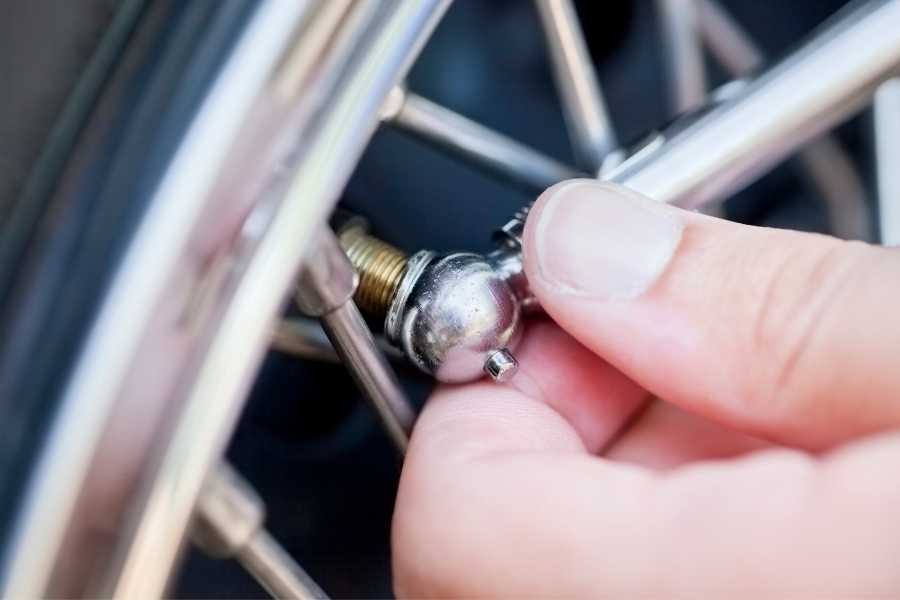
What is the Best Tire Pressure for a Mountain Bike?
Pressure matters to mountain bikers more than anyone else. The right amount of pressure can make or break a ride.
Too little pressure and you won’t be able to grip your terrain, especially when you’re headed up into the mountains. Too much pressure and your wheels will bounce over the smallest bumps, squishing off every last bit of contact with the ground and leaving you unable to handle any obstacles between you and your destination.
High-pressure tires are great on straight roads, but chances are you ride in the real world where there are corners, potholes, and other obstacles — if you don’t have enough air in your tires, it could result in pinch flats and other bruises and bumps. You can also risk burping out all the air from your tubeless tires and rolling off your rims.
And it depends on the type of tire that you are using. If you are using tubes, then the psi is generally higher than with tubeless tires.
Never forget that no one can determine the right psi for you; you are the only person who can do that. For optimal riding comfort, start with the 25 psi tire pressure and consider these guidelines:
- Tubeless tires are less prone to blowouts
- Front tires provide greater traction when turning
- Lower tire pressure results in better fuel efficiency
- Higher-pressure tires roll faster over smooth trails
- Lower pressure tire provides for better traction
How to Pump Up your Bike Tires
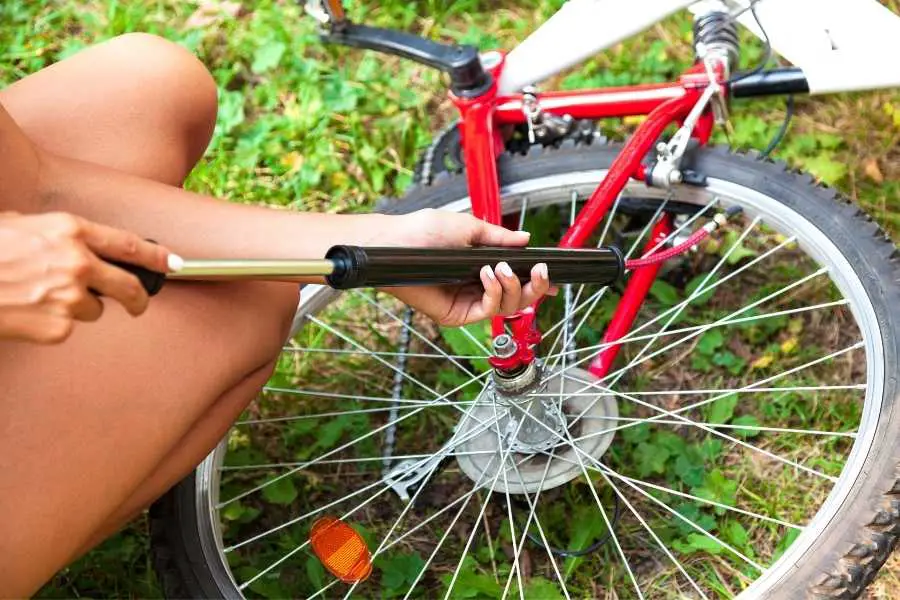
Pick the Right Pump
Schrader and Presta are two different kinds of bicycle pump to choose from. The Schrader is wider and flatter, while the Presta is narrower and has a locking nut to ensure air won’t leak out. Before you start pumping, make sure you have a compatible gauge to measure your tire pressure and don’t forget your pump’s manual — only then will you be able to avoid any potential issues down the road.
Pumping Air
Before adjusting your tire pressure, you need to know two numbers: the PSI rating of your tires and the weight of your bike and rider, combined. You can make your ride smoother or bumpier depending on which way you set those numbers. When you’re riding on smooth ground and you’re not carrying much, run lower pressure. If you’re on slippery roads or are going uphill, inflate your tires more. Stick the pump head onto the valve firmly. The better you do this, the less air you will lose, and the more air will go into your tire.
Follow the PSI
If you have a bike pump with an air pressure gauge, use it to determine the PSI of your tires. Press “inflate” until the PSI is in the middle range of your tire’s ideal rate. If you’re going for a bike ride, don’t stop there—go for a ride, and re-inflate as necessary. You’ll want to adjust the pressure in your bicycle tires to a PSI (pounds per square inch) that corresponds with your weight, as well as the terrain you’re riding on.
How to Check Your Bicycle Tire Pressure without a Gauge?

If you want to use a method other than a small gauge to determine pressure, here are some methods that may work for you:
You can judge the quality of your tires by how they feel while riding. If the ride is bumpy or you can feel every pothole and pebble, then your tires are worn out. Then again, some riders prefer softness, even if it means you can feel every pebble and bump in the road.
The most popular way of assessing a tire’s likeness to its actual life is the “pinch test”. This method is not accurate, however. Due to differences in manufacturing techniques and the location of the strength-bearing layers, the sides and the center of a tire can have different strengths. The strength is what you are after. If the pinched surface does not collapse or even leave a mark, it means that this spot has enough strength for use.
You can use your thumbs (or even your knuckles) to push on the running surface of the tire. This helps give you a good idea of how much the rubber is likely to deform when placed under pressure. It’s also an easy way to check if there are any sharp objects embedded in the tire. So if you’ve heard a strange whistling sound coming from your wheels drop your bike and do this quick test before continuing on your ride.
It’s not perfect, but it’s better than a hand-measurement. And when you use your hands to gauge pressure, they can be bigger or smaller depending on the situation: if you’ve just worked out, your grip might be stronger.
For more recommendations and reviews regarding bike tire pressure gauges, check out our old buying guide!
Conclusion
If you’ve been searching for the best bicycle tire pressure gauge that’s compact, the Topeak D2 SmartGauge is the one for you. Its sleek design and small size make it easy to carry on every ride — even when you’re solo. Capable of measuring both Schrader and Presta valves, this gem of a tool does its job with ease and accuracy.
For those who prefer a larger grip on their gauge, the Astro AI Digital Banger Hanger is a great option. It measures at the standard 5/16″ size and has a handy light to find the valve in the dark.
For a classic design that allows for accurate accessory inflation, the Accu-Gage is for you. The digital display is clear and easy to read. The bike tool pumps quickly so you can be back on the road in no time.
No matter which bicycle tire pressure gauge for inflation you choose, remember to stay safe and measure your tire pressures regularly.

